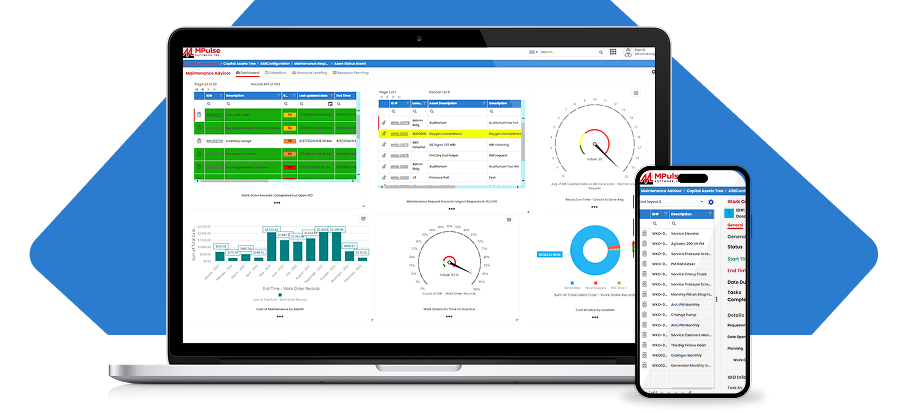Maintenance managers know that the backbone of any maintenance program is a preventive maintenance plan. Generally, we assume that preventive maintenance is a good thing and it will prevent downtime.
But there are certain circumstances where it’s more complicated.
That’s what MPulse customer Angie discovered. As a team supervisor for a government agency, Angie re-examined her team’s maintenance strategy after she reviewed her organization’s CMMS data.
Angie’s department maintains radio equipment, which can be located in remote areas that are physically challenging to access. In Angie’s case, mountainous terrain made it particularly difficult. Historically her radio technicians would schedule preventive maintenance twice a year (in spring and autumn) when the weather made access easier.
After reviewing work order data and equipment readings in her MPulse Software, Inc, Angie wondered if it was more efficient to only do those tasks once a year by using remote site monitoring technology.
The Value of CMMS Data for Preventive Maintenance
Angie knew she needed more than just a hunch when she proposed her idea to her department head. She did some research and tested her theory.
“Most of our assets in these locations are classified as critical equipment,” she said. “It wasn’t enough to tell my managers that I thought this would work. I had to prove it. Equipment failure was a serious concern.”
Her tests showed that with a few tweaks to their preventive maintenance plan, the technicians could reduce their remote area visits to once a year. That change would reduce the preventive maintenance tasks for those assets by half, which would save…
- Parts and material costs
- Labor costs
- Transportation costs
- Environmental impact
Plus, those funds could be reallocated to other areas.
Data-Driven Maintenance Management
Although Angie’s plan seems like a no-brainer, not everyone was on board at first. “I ran into some resistance—the ‘we’ve always done it this way’ attitude,” she said.
But with MPulse, she could track failure rates and equipment measurements. Historical data backed up her theory.
“I eventually convinced them to allow a 1-year trial,” she said. “Without that data, it would have been more challenging.”
The result? Angie’s department has experienced no additional emergency shutdowns since the change three years ago.
Advantages of Condition-Based Maintenance
Time-based preventive maintenance programs are a standard in our field. But condition-based maintenance can reveal different—and sometimes better—ways to do things.
Angie’s team plans to expand on her idea.
“We’ll use MPulse’s Condition-Based Maintenance feature to keep tabs on our critical assets by recording temperatures and other performance indicators,” she said. “That’ll make it easier to identify problems before they happen. And preventing outages is always a good thing in this profession.”
Interestingly, Angie’s managers are more receptive this time. She credits the success of her first proposal as the reason her other ideas have gained support faster.
Is it time to re-examine your preventive maintenance plan? Learn more about how MPulse CMMS software and condition-based maintenance can help.


